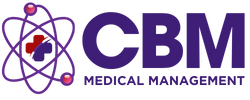Welcome to an insightful exploration of the frequent missteps found in credentialing applications, as endorsed by CBM Medical Management, which boasts over 40 years of experience in Revenue Cycle Management and Practice Start-up assistance designed to benefit mental health providers. Let’s dive into the nuances of ensuring a smooth credentialing process.
Understanding the Stakes of Credentialing
Credentialing is a crucial step in establishing and maintaining the legitimacy and qualifications of healthcare providers. Incorrect or incomplete applications can result in delays, loss of revenue, and professional setbacks. But what are the most common mistakes, and how can they be avoided?
Top Mistakes in Credentialing Applications
- Missing Information: A typical, and perhaps the easiest to rectify, error is the omission of necessary data. From licenses to certifications, each detail matters.
- Outdated Documents: Submitting expired documents can significantly stall the credentialing process.
- Inconsistent Information: Discrepancies between different documents can raise red flags and delay the process.
- Not Following Specific Instructions: Each credentialing body may have different requirements. Failing to customize applications to meet these specific requirements can lead to application rejection.
Preventative Strategies to Streamline the Credentialing Process
Avoiding these pitfalls entails adhering to several practical steps that ensure a thorough and accurate application. How can providers ensure their documents meet the mark?
- Double-Check for Accuracy: Always review your application for completeness and accuracy before submission.
- Maintain Current Documentation: Regularly update all practice-related documents and ensure they are readily available when needed.
- Adhere to Guidelines: Familiarize yourself with the specific requirements of each credentialing institute and customize your applications accordingly.
- Seek Professional Help: When in doubt, consulting with experts who specialize in credentialing services can prevent mistakes and streamline your application process, saving time and minimizing frustration.
Final Thoughts
Effective credentialing is more than just a bureaucratic necessity; it’s a cornerstone of trust in the healthcare profession. It assures patients and fellow healthcare providers alike of your qualifications and dedication to professional standards. Taking the time to ensure your credentialing applications are flawless is an investment in your professional future.
Remember, the difference between a successful application and one that leads to delays can often boil down to the simple steps outlined above. What will you change in your next credentialing submission?


